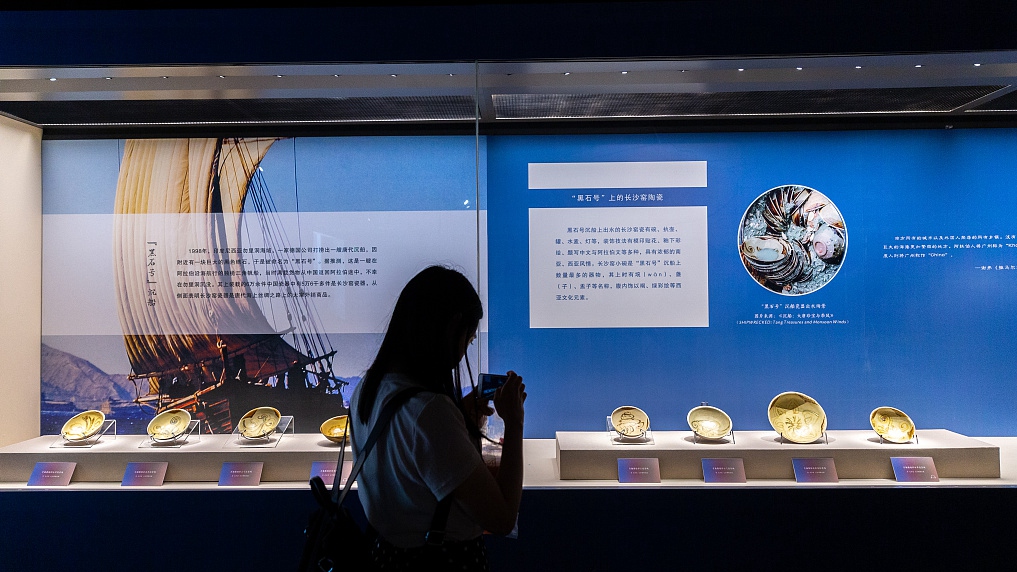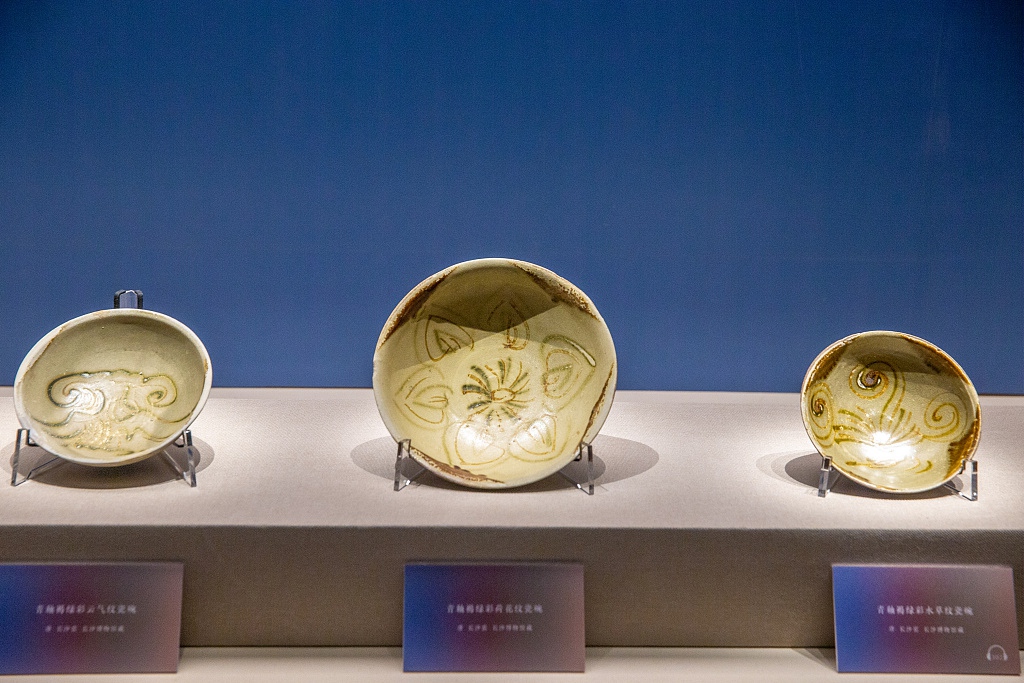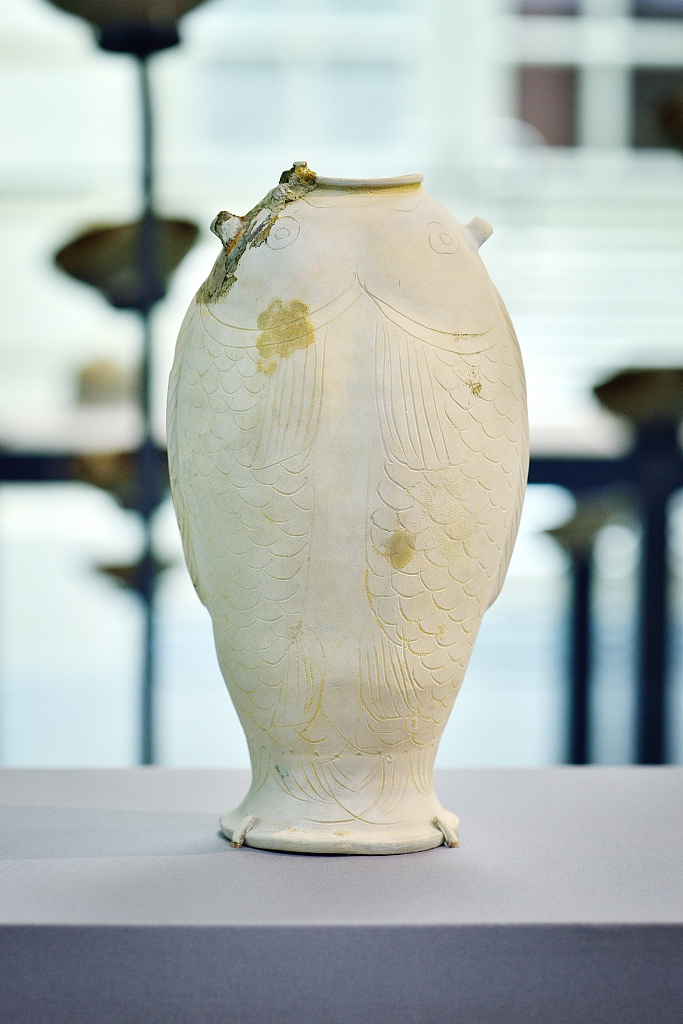
Porcelain pieces on display in Guangzhou on September 5, 2019. /CFP
Porcelain pieces on display in Guangzhou on September 5, 2019. /CFP
A total of 248 pieces of cultural relics, mostly from the Belitung shipwreck, are now on display at the Shanghai Museum, the first time that the items make their public debut on such a large scale.
The exhibition, which opened on September 14, is jointly held by the Shanghai Museum and the Asian Civilizations Museum in Singapore. Of the 248 pieces, 168 are from the shipwreck while the other 80 are from nine Chinese museums and feature porcelain pieces, gold and silver wares and bronze mirrors.
The Belitung shipwreck was discovered in 1998. It was an Arabian dhow that sank on its journey back from China. The wreckage was discovered off the coast of Belitung Island of Indonesia. The shipwreck was loaded with delicate items made of porcelain, silver, gold and glass. It was also carrying various spices.

Several porcelain pieces on display in Guangzhou on September 5, 2019. /CFP
Several porcelain pieces on display in Guangzhou on September 5, 2019. /CFP
The ship is believed to have sunk around 830 A.D. and its discovery paints a picture of the seaborne trade during that time as well as the level of craftsmanship during the Tang Dynasty (618 – 907).
Most of the wares salvaged from the shipwreck are made of porcelain from the Tang Dynasty, including over 50,000 Tongguan Kilns from Changsha City of Hunan Province. There are also Celadons from Guangdong and Zhejiang.
One ceramic item has inscriptions that indicate it was made in 826 A.D. Some of the porcelain pieces have ancient Chinese poems and proverbs, Buddhist paintings and monsters from Indian myths inscribed at the bottom.

A porcelain piece on display at Singapore's Asian Civilizations Museum on December 23, 2015. /CFP
A porcelain piece on display at Singapore's Asian Civilizations Museum on December 23, 2015. /CFP
According to Peng Tao with the Shanghai Museum, three blue-and-white porcelain plates were discovered in the wreckage, which brings forward the history of the Chinese porcelain exports by at least 500 years.
The exhibition is the first international cultural cooperation held in China since the COVID-19 outbreak, and both museums said they are willing to hold further cultural exchanges in the future.
The exhibition opens to the public for free on September 15 and will run until January 10, 2021.